Marina Syntelis
LMarina's largest ever painting of the Aegean Sea!
Incredible large original oil painting by the amazing Marina Syntelis!
A mesmirizing super hyper realistic wave painting capturing the power of The Aegean Sea
Powerful new painting of two crashing worlds by the amazing Marina Syntelis!
Beautiful new painting based on the strong winds called Meltemi in the Aegean Sea!
Smashing new long aquamarine oil painting by Marina Syntelis!
Incredibly vibrant original oil painting which literally jumps out right at you! You can feel the sea with this Marina Syntelis classic!
A new painting by Marina from the depths of the Ocean capturing her thoughts during the Pandemic
One of Marina's latest paintings with a fascinating view through the clouds to the pools of water below. Signed on all 4 sides verso as can be hung on either side!
Mesmirising and unusual magical original Marina Syntelis oil painting sees a painting created with a difference!
The words below appeared in an article in 'Art Scene Athens' December 2019 about Marina Syntelis, written by Stella Sevastopoulos
(https://artsceneathens.com/2019/12/13/in-focus-marina-syntelis-and-wave-power/)
Marina Syntelis is an artist whose exploration of the power of the sea, has attracted the interest of many a collector over the past few years in particular.
But the creative journey that got her there – to her awe-inspiring renditions of the structures of waves – is an unusual one, seeing as in a sense, she had to go back in time, before she could go forward Marina Syntelis is a graduate of the Art School of Thessaloniki’s Aristotle University (and let’s just point out that finishing art school in Greece, means a study course of 5 years, to master’s level). Her work has evolved over the years, from the 3-dimensional (installation art, hanging sculptures made of polyester resin, suspended in the air with a series of nylon threads that create elaborate optical effects out of the layers involved), to the 2-dimensional, paint on canvas.
When Marina Syntelis turned to painting, she was initially attracted to the unique formal attributes of the landscapes of Santorini, where the Cycladic-style white houses perched on the cliff-tops contrast with the big blue sea below. There is something innately cubist about these houses, which the artist obviously enjoyed exploring in her paintings. But as time progressed, Marina lost interest in those rooftops, and became all the more focused on what was beyond them – the sea with all its myriads of shades, light effects and rhythms.
The seemingly structureless fluidity of the water became a challenge for her, to capture it and give it form and structure, to find its inner workings. Ripples and light effects danced on her canvases like mystical beings. But it was the drama of the wave, which also enticed her. The way it crashed into millions of pieces, and how she could make sense of it visually, formally, philosophically, empathetically. Marina Syntelis’s analysis of wave structure became all the more in depth and detailed with every new painting. Sometimes she used acrylics to capture the water effects, other times oils. Technique-wise, she accelerated towards hyperrealism/photorealism, yet in terms of atmosphere, she also allowed for an element of magical realism, or even some abstraction and expressionism to reign in sections of her works, where the crashing waters create misty, ethereal and elusive atmospheres.
But then, Marina Syntelis decided to reach back in time, and that’s when she discovered an age-old secret, used by the old masters to create luster, transparencies, and glowing colours in their works. There, in the depths of time, she discovered the use of pine resin, mixed with turps and linseed oil, known as a form of ‘megilp’.
This medium, was used together with oils by many masters. It was a secret ingredient used by Turner, Rembrandt, Van Eyck, Rubens, in order to create fabulous glazes and dates back to the mid-15th century, in various concoctions (combinations of different types of resins and oils). It is a technique that very few artists use today, or have ever even tried, even at art school. And at this point, there was a leap of faith: Faith in the beauty of the old masters and their knowledge. Faith in history and tradition. But also faith in the contemporary artist Sef Berkers, who helped Marina to discover this dying technique.
Marina resurrected this technique (a laborious one which involves creating different ‘strengths’ of this medium, with different percentages of linseed oil/resin/turps), by placing it within a contemporary context. Because her art is contemporary, despite the age-old technique. And this is the beauty of contemporary art these days, that you are free to explore anything and everything, as long as you find a way to make it contemporary: to speak about your times.
There is a power and a dynamism in Marina Syntelis’s work that harks back to Romanticism, and its awe-inspired perspective on nature, coupled with a classical search for structure and form (how can there not be? She’s Greek after all). But, there’s a contemporary feel to her painting: Is it because of the way she combines hyperrealistic obsession with detail with an ethereal abstraction? Maybe in part. Certainly copious amounts of time have gone into each work, in order to capture that lace-like sea foam and those atmospheric water particles suspended in mid-air. But the contemporary side to Marina’s majestic, proud, glorious, waves is the way they pronounce the power of nature in this day and age, in an almost forboding manner at times.
There is fear and darkness there too, in that uncertainty of nature, that ‘hubris’ of old. These waves demand your respect. It’s as if this artist is putting nature back on the pedestal for all to see, and asking us to pay our respects. It’s as if she is asking the age of the Anthropocene to reconsider its values, those values which are driving us apart from nature. She is asking us: “Are you sure about this? Can you really control this?” In the face of today’s environmental crisis, this refocus on nature’s power is a burning issue.


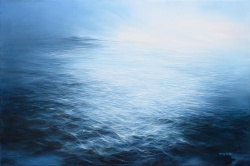
.jpg)
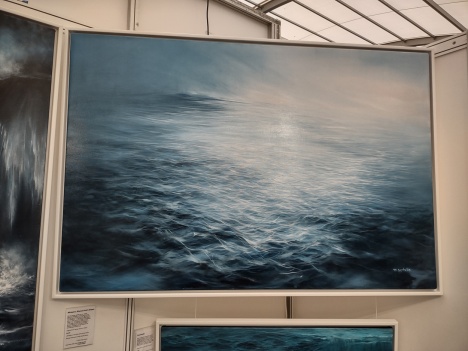
.jpg)
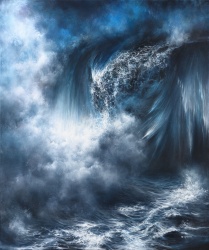
.jpg)
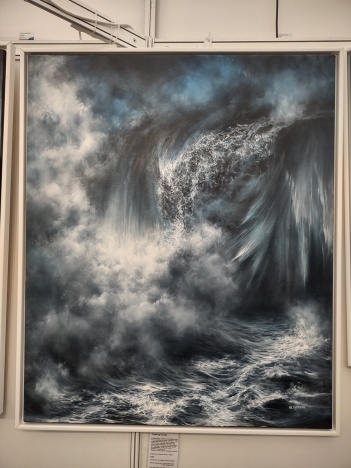
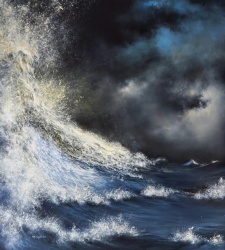
.jpg)
.jpg)
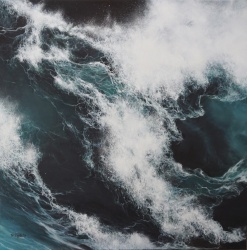
.jpg)
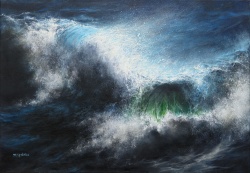
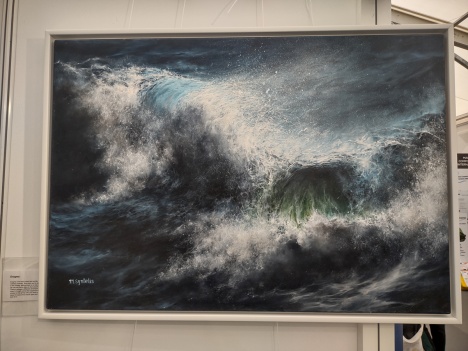
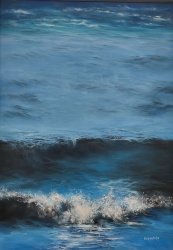
.jpg)
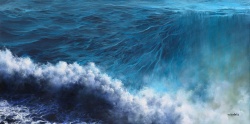
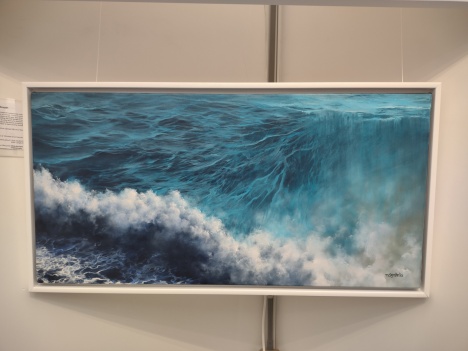
.jpg)


.jpg)
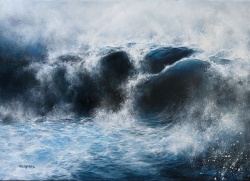
.jpg)
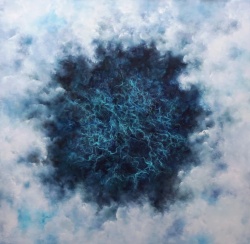
.jpg)
.jpg)
